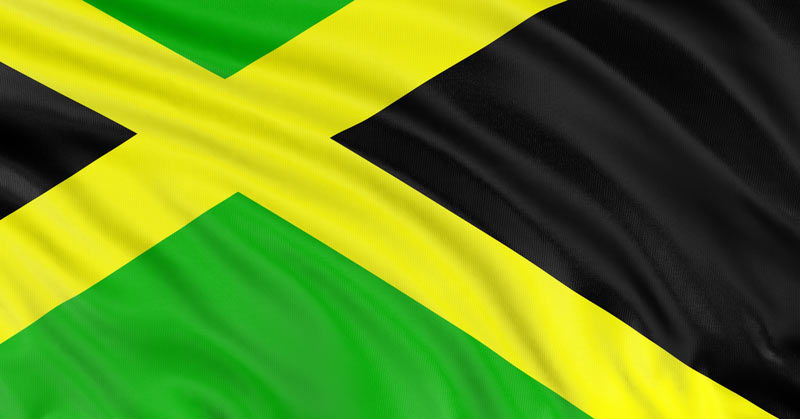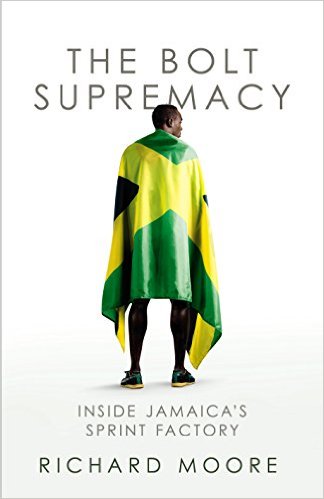
Book Review By Craig Pickering
Every once in a while, someone changes the face of sport. In the late eighties, it was Ben Johnson. In the late nineties and early 2000s it was Lance Armstrong. Both had a very public fall from grace related to their use of performance-enhancing drugs.
As someone who has always been interested in sprinting, I saw a lot of my heroes suffer similar drug-related public failings while I was growing up. I remember watching Marion Jones smash the field in Sydney 2000. I was a massive fan of Mo Greene (who has never failed a drug test, but has some guilt by association), and remember being amazed by Tim Montgomery breaking Greene’s world record in 2002. I was on the edge of my seat that same year when Dwain Chambers beat the world’s best sprinters in a crazy night at Crystal Palace. I remember being incredibly excited for the 2004 Olympic 100m final, when Justin Gatlin hung on to clinch the gold medal. I’ve always enjoyed watching Tyson Gay race.
Given what has gone before, it is normal to be a bit sceptical when a sprinter revolutionizes the sport and rewrites the record books. When that athlete wins the 100m, 200m, and 4x100m at two successive Olympics, that scepticism is further elevated. Can Usain Bolt be clean?
Getting an answer would be difficult—you can’t prove a negative, as Lance Armstrong always used to say. Fortunately for us, Richard Moore (author of The Dirtiest Race In History) has done a fair bit of research for us. His research includes traveling to Jamaica to answer two key questions: Why is Bolt so fast, and is he clean? Along the way, Moore introduces us to a host of Jamaican sprinters—past, present and future—in an examination of what makes them the premier sprint nation in the world.
Jamaican Sprint Dominance
The book starts in London, discussing the 2012 Olympic Games in which Jamaicans won seven out of the eight sprint gold medals. Moore then takes us to the Moscow World Championships the following year, examining some of the doping accusations aimed at the Jamaican camp following the positive tests of Asafa Powell, Veronica Campbell-Brown, and Sherone Simpson. This introduces the main themes of the book quite nicely—Jamaican sprint dominance contrasted with questions regarding the nation’s drug-testing ability and behavior.
Following this, Moore takes us to the Jamaican inter-schools championships, or “Champs,” where he begins to examine the Jamaican sprinting culture. He paints the picture of a sell-out crowd watching a slick championship event sponsored by large corporations, with adulating fans cheering on their local schools. This is a far cry from any school competition I attended growing up in the UK. The competition most similar to the Jamaican Champs is the English Schools Championships, a competition that I raced in three times.
It’s fair to say that the level of interest in those championships pales in comparison to “Champs”—there definitely aren’t sellout crowds and the atmosphere can be flat at times. The standards are also, in places, a gulf apart. I won the Senior Boys’ title one year in a Championship record of 10.41; the Champs record is 10.12.
This discrepancy illustrates some of the potential reasons behind Jamaican sprint success—greater emphasis on athletics, and especially sprinting, than in the UK and other countries, and exposure to high-level competition from a young age. In fact, this intense exposure to leads to speculation that one reason Asafa Powell appears to freeze mentally on the big stage is because he rarely competed at Champs. His school often didn’t qualify. There are similar theories in the UK regarding some of our promising junior sprinters, such as Mark Lewis-Francis. Perhaps they are never exposed to the correct amount of pressure and close races, and so fail to reach their potential.
The US Collegiate Sprint System
This could also be a reason behind another sprinting stalwart’s success. The US collegiate system exposes athletes to a heavily competitive structure which allows them to hone their mental skills, as well as getting used to digging deep while maintaining relaxation and correct sprinting form. As Moore explains, the Jamaicans themselves used to rely on sending their most promising athletes into the US collegiate system and using it as a sort of finishing school to hone their talent and technique.
Later on, Moore provides additional insight into why Jamaicans appear to have a never-ending production line of promising sprinters—their proximity to role models. He mentions a visit of Warren Weir, 2012 Olympic 200m bronze medalist, to his old school, Calabar, on the eve of Champs to deliver a motivational speech. The opportunity for the competing athletes to hear from a successful alumnus of their school must have left an indelible mark. Again, similar opportunities are lacking in the UK; there isn’t the same closeness or importance placed on the high school championships as in Jamaica.
Further chapters introduce us to people and institutions responsible, in part, for Jamaica’s sprint success. They includes Herb McKenley (1952 Olympic silver medalist over 100m and 400m—now there is a challenge for Bolt!) and Dennis Johnson. DJ was a former world-class 100m runner whoe stablished a system of coaches in Jamaica to reduce the reliance on the US system. Johnson had a big role in shaping the knowledge of Glen Mills and Stephen Francis, the two premier coaches based in Jamaica today. This comes alongside G.C. Foster College, which trains a high number of sports coaches, again allowing Jamaica to have a high amount of quality coaches to nurture the next generation. Mills and Francis also get a share of the spotlight in these chapters.
Bolt’s Background
Throughout the book, we learn about Bolt, starting with his very humble beginnings. Moore discusses his childhood and education, as well as charting his early athletics success. Bolt is only a few months older than me, so we were relative peers during my career—though obviously he was much more successful.
I first heard of Bolt after he won the World Junior Championships in Kingston in 2002—as did most people. I first met him in 2003 at the World Youth Championships in Sherbrooke, Canada, where he was the best-known athlete. He was attempting to win the 200m and 400m and set World Youth records in both events. Ultimately, he was foiled by a mixture of bad food and bad weather. In the 400m, he ran the easiest race I’ve ever seen to win a heat but had to withdraw from the semi-final with food poisoning. He won the 200m in 20.40 , running into a strong head wind. He beat Michael Grant of the US, who later dropped out of the sport to attempt a career in the NFL.
Grant’s defection isn’t at all that unusual for US-based athletes. Before those Championships I was ranked about 20th in the world, with 14 Americans ahead of me. A US coach told me they had to select their 14th and 15th quickest athletes because the top 13 all declined so they could focus on the NFL. The following year, when I competed at the World Junior Championships, Demi Omole of the University of Wisconsin took second in the 100m, and then tried his hand at the NFL. This illustrates another potential reason Jamaica has so much success in the sprints: It can hold on to its best athletes. Sprinting appears to be the national sport in Jamaica, with promising youngsters leaving other sports to become sprinters. In the US, on the other hand, promising sprinters seem to leave the sport, most often for the NFL.
Moore also addresses the elephant in the room: drugs. He chronicles the multitude of positive tests among Jamaican athletes (which generally appear to be for stimulants, or inadvertent positives). He discusses JADCO (Jamaican Anti-Doping Commission), and its problems. There is also a brilliantly ironic section where Carl Lewis weighs in with his opinions on the effectiveness of drug testing in Jamaica—the same Carl Lewis who had three positive drug tests at the 1988 US Olympic Trials covered up by the US Olympic Committee (USOC). Moore does a really good job here of placing speculation in context, and explaining some of the nuances often lost in the lay press and public when it comes to positive drug tests and the limits of performance.
Genetic Markets
Then we come to genes. Those of you who have read either The Sports Gene by David Epstein (and if you haven’t, then you absolutely should) or my “The Genetics of High Performance Exercise” article know that some genes are a bit more common in elite speed-power athletes than in sedentary controls and endurance athletes.
Of these, the most-researched is ACTN3. Essentially every elite sprinter carries at least one C allele of this gene. In fact, when researchers find an elite speed-power athlete without one, they quite often write it up as a case study! The interesting thing about this gene is that 82% of Caucasians have a C allele. So the fact that someone has the CT or CC version of this gene (and this point, it isn’t necessarily clear that CC is better than CT for sprint performance) does not guarantee sprint success. There must be more going on here.
Another interesting facet to this gene is that the C allele is much more prevalent in black African and Afro-Caribbean populations, occurring in up to 99% of subjects in some papers. Conversely, the C allele prevalence is lower in the Asian population, occurring in around 75% of the people. To illustrate the multi-faceted approach towards Jamaican sprint success, Moore introduces us to Yannis Pitsiladis. He has carried out research on ACTN3 in Jamaica, and also takes up a chapter in Epstein’s book. Pitsiladis discusses his belief that, while the genes are important, so too is the “environment,” which includes sociological factors as well as training.
Face Time with a Legend
The next chapter deals with the 2011 Daegu World Championships, discussing Bolt’s disqualification and Yohan Blake’s subsequent victory. This chapter reminds me of one of the most awkward moments of my life. The Great Britain team were staying in the same accommodation block as Jamaica, and I had gone to watch the 100m final. Getting a bus back was a nightmare, so I didn’t return until about two hours after the race.
I got in the lift, and it stopped after a few floors. In walked Bolt and his agent, Ricky Simms. I know both of them enough to say hi. But clearly this wasn’t a good time, so I just looked at the floor. The lift seemed to take forever, and—I assume in an attempt to ease the tension—Simms asked me if I had ever been disqualified for a false start.
I couldn’t think of an answer that would be both honest (yes, I had), and also illustrate that the race I was DQed in wasn’t as important as a World Championships final so as not annoy Bolt. Fortunately, the doors to my floor opened at that point, so I just mumbled something and got out.
Overall, I enjoyed this book. I’m familiar with the story, and it was good to pick up little insights I wasn’t aware of. Moore isn’t afraid to ask tough questions about doping, questions which absolutely should be addressed and something he does in a very balanced manner. There is also a lot of insight into the cultural reasons why Jamaica is such a hotbed of sprint success, and we get some knowledge on the coaching structures of the best sprinters in the world. So if you’re interested in sprinting, Usain Bolt, doping in sport, and/or wondering why Jamaicans are so successful, this book is a useful read.
Please share this article so others may benefit.
[mashshare]

